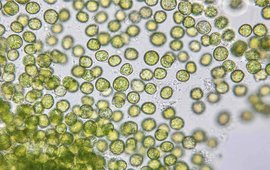Research topics
Biosignatures & early life on Earth
How did life evolve from the first bacteria to increasingly complex life, culminating in the appearance of animals and eventually ourselves? How can we better trace incipient life on Earth and beyond? We study the continuous reciprocal interaction between biological evolution and a changing Earth system from a holistic perspective, and search for new biosignatures.
Climate & landscape evolution
In the face of rapid global environmental and climatic change, there is an urgent need to distinguish between natural mechanisms and human-induced processes. Understanding the space-time dynamics of extreme events is a prerequisite for their predictabilty.
Cosmogenic Nuclides
Cosmogenic nuclides are a state-of-the-art tool to quantify rates of Earth surface change - weathering, erosion - and can be employed to constrain the age of landforms, such as moraines or terraces.
Global Matter Cycles
We use cosmogenic nuclide and stable metal isotope methods to quantify rates and processes involved in cycling of elements and sediment over time. Broadly speaking, we quantify global matter cycling through Earth's reservoirs to understand Earth's evolution.
Landscape Evolution
We study how different landscapes react to changes in climate, biota or tectonic events. To this end, we determine the speed of erosion and weathering processes and reconstruct the temporal sequence of landscape changes.
Lipid biosynthesis & metabolomics
How and why are certain lipids biosynthesized, what regulates this activity, how are biosynthetic capacities phylogenetically distributed and can we constrain the evolution of such capacities throughout Earth history?
Molecular isotomics
The relative abundance of rare stable isotopes incorporated into biological molecules carries information on used substrates, biosynthetic pathways, environmental conditions and post-depositional alteration processes. Advances in high-resolution MS now allow us to study the internal isotope anatomy of individual molecules.
Negative emission technologies
The reduction of greenhouse gas emissions is insufficient for reaching the currently set climate goals. 'Real' compensation is needed in the form of active greenhouse gas removal, yet most negative emission technologies are limited by cost, TRL, scalability, ecological risk or societal resistance. We explore carbon-cycle based mechanistic solutions, such as the inertinization of biomass-carbon and waste-carbon in order to extend the residence time of these CO2-sinks and evaluating environmental aspects of long-term storage.
Organometal (bio)geochemistry
Sedimentary organic matter contains varying abundances of different metals, inherited from precursor biomass or secondarily incorporated into the carbonaceous matrix. The diagnosticity of this organometal fingerprint, the effect that diagenetically-complexed metals have on organic preservation and the C-cycle, catalytic influence on subsequent rearrangement/conversion, or the role of metal bearing organics in ore formation are still insufficiently understood.
Stable Metal(loid) Isotopes
We are dedicated to developing innovative analytical techniques for measuring stable metal(loid) isotopes. By utilizing novel stable metal isotopes, we investigate the processes of weathering and erosion on Earth's Surface from local to global scales, contributing to our understanding of global sediment cycles, past climates, landscape evolution, and geological processes.
The Critical Zone
The Critical Zone is where rock meets life. We develop and apply geochemical tools to understand how the 'geo-world' and the 'bio-world' interact.
Weathering and Erosion
We investigate how the atmospheric CO₂ content and the global climate are regulated on geological time scales by natural feedbacks through weathering and erosion. We use various geochemical methods, such as cosmogenic nuclides and stable metal isotopes.
![[Translate to English:] Picture of ancient Archean stromatolites](/fileadmin/_processed_/1/f/csm_Theme_2_e1c2da02fb.jpeg)
![[Translate to English:] Photograph of Mount Bruce, Australia](/fileadmin/_processed_/e/a/csm_Theme_3_5d5db9cd8c.jpeg)









